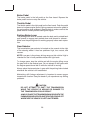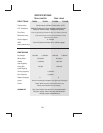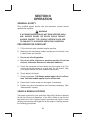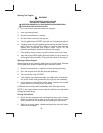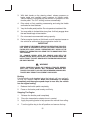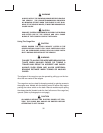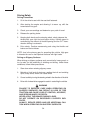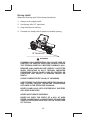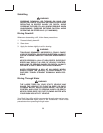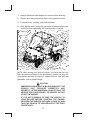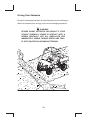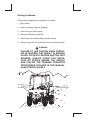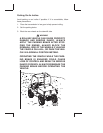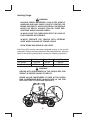
Driving Safely
Driving Procedures
1. Sit in the driver’s seat with the seat belt fastened.
2. After starting the engine and allowing it to warm up, shift the
transmission into gear.
3. Check your surroundings and determine your path of travel.
4. Release the parking brake.
5. Keeping both hands on the steering wheel, slowly depress the
throttle with your right foot and begin driving. Vehicle speed is
controlled by the amount of throttle opening and the CVT trans-
mission shifting is automatic.
6. Drive slowly. Practice maneuvering and using the throttle and
brakes on level surfaces.
NOTE: Low is the primary gear for operating this vehicle. High gear
is intended for use on hard-packed surfaces with light loads.
Driving on Slippery Surfaces
When driving on slippery surfaces such as wet trails, loose gravel, or
ice, be alert for the possibility of skidding and sliding. Under these
conditions, follow these precautions:
1. Slow down when entering slippery areas.
2. Maintain a high level of alertness, reading the trail and avoiding
quick, sharp turns, which can cause skids.
3. Correct a skid by turning the steering wheel in the direction of the skid.
4. Drive with 4-wheel drive engaged to assist in controlling the vehicle.
WARNING
FAILURE TO EXERCISE CARE WHEN OPERATING ON
SLIPPERY SURFACES CAN RESULT IN LOSS OF TIRE
TRACTION AND CAUSE LOSS OF CONTROL, ACCIDENT,
AND SERIOUS INJURY OR DEATH.
NEVER APPLY THE BRAKES DURING A SKID.
DO NOT OPERATE ON EXCESSIVELY SLIPPERY SUR-
FACES.
ALWAYS REDUCE SPEED AND USE ADDITIONAL CAU-
TION WHEN OPERATING ON SLIPPERY SURFACES.
34



